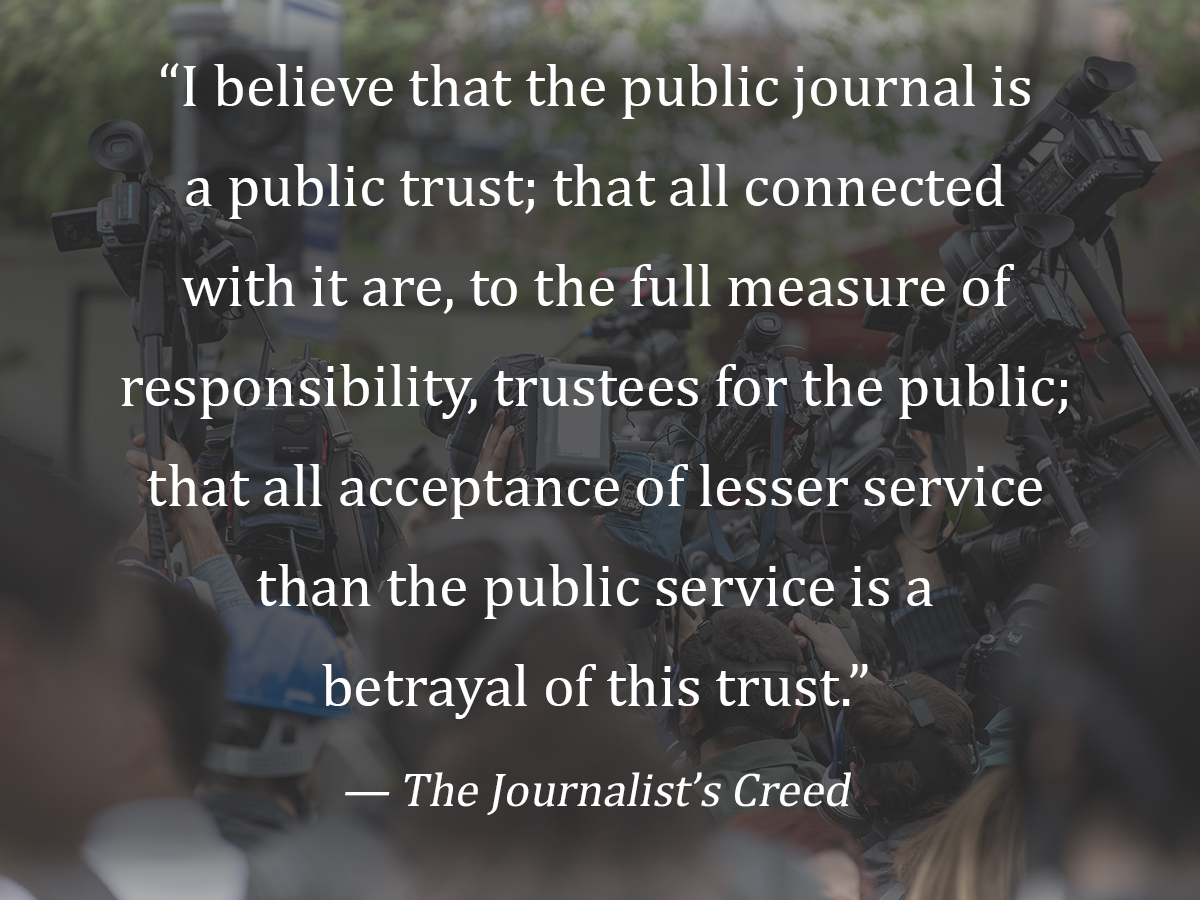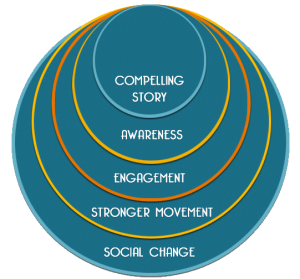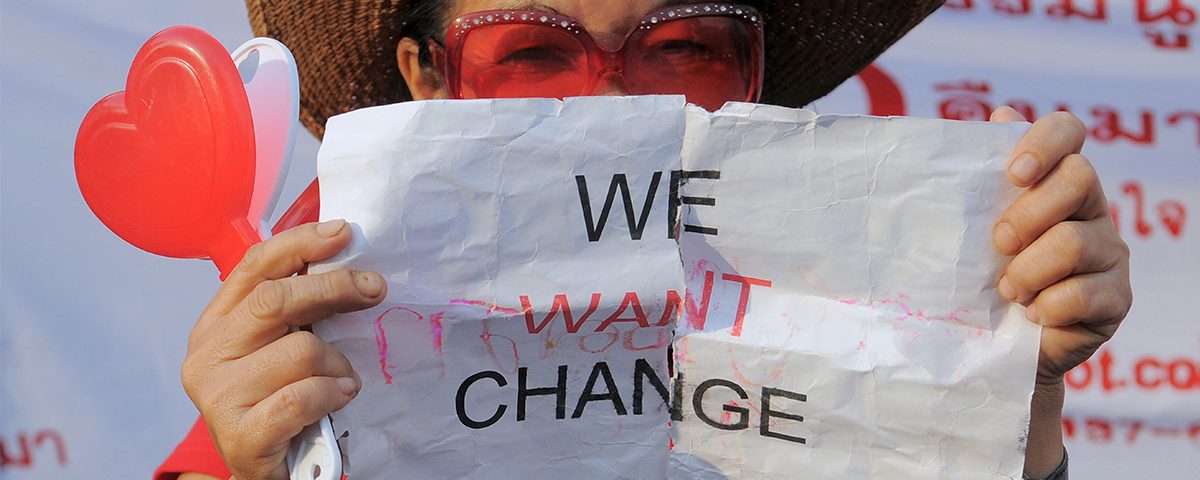
PartnersGlobal’s Innovative Approach to Combating Corruption
11/21/2017
“I believe that the public journal is a public trust; that all connected with it are, to the full measure of responsibility, trustees for the public; that all acceptance of lesser service than the public service is a betrayal of this trust.” — The Journalist’s Creed
07/18/2018Who doesn’t love a great story? Even in this digital age, storytelling has continued to be central to human social customs. Whether it was on screen, between the pages of novels. or behind grand curtains, profound characters, actors and thespians have always had the power to not only captured our hearts, but also our minds to transform our perspectives.
Engaging Hearts, Minds and Action for Social Change
Although storytelling can is primarily used for entertainment purposes, storytelling can also compel attitude and behavior change within crucial social issues. From soap operas and documentaries, to participatory theatre and heartrending editorials, stories with the right messaging have the potential to influence, empower and enrich societies to answer the call to action. However, when using storytelling as the primary stimulus to influence behavior change, one must incorporate strategic design and evaluations early and often. Broadly, storytelling for social change can take many forms, but there are underlying similarities that spark the greatest catalyst of storytelling for social impact: empathy and compassion.
Great stories are the bridges to opportunities for collaboration and partnerships
It’s no secret, just like great stories have a rich cast of characters, it takes many cooks to whip up a good story. For novices, utilizing practical resources like the ‘Telling Stories that Matter’ toolkit can help educate writers with the fundamental storytelling approaches to inspire meaningful conversations with participants affected by conflict. A collaborative project with the International Storytelling Center and Partners Global, both partners hope multimedia storytellers will use the toolkit to encourage stories of deep interpersonal relationships of healing, reconciliation, conflict prevention and resolution.
Truly, if we are to change hearts and minds, we must always begin with a story. People connect to people; people identify themselves more by our differences than our similarities; its human nature. It’s up to us to share stories that connect humanity with universal principles and shared desires for the basic necessities to live and thrive. Philanthropic and public policy sectors, should not only challenge themselves to forge the time to share impact stories, but also experiment with multi-platforms to really push norms, and expand targeted audiences and perspectives. Another essential piece to expanding and developing more direct relationships with audiences are partnerships with complimentary organizations or businesses to broaden distribution.
Done right, extraordinary things happen – stories become viral, minds and hearts are changed, people donate, they create awareness campaigns, they march – and they vote.
In this fast paced world, where information is vastly consumed through social media feeds, radio, or TV, storytelling has become even more crucial. That’s why for both optimum results it’s vital to have a properly collaborative approach with donors, government agencies, beneficiaries and the public. Done right, extraordinary things happen – stories become viral, minds and hearts are changed, people donate, they create awareness campaigns, then they march — and they vote. As story-driven creatures, new technology has only progressed our storytelling capabilities, making our collaborative story-led work as perhaps the greatest potential to break vital new ground for open dialogue of reconciliation and healing.
Measuring success
 Storytelling is an essential component of communication, but very few firmly grasp the elements of good storytelling, and fewer understand how it can be leveraged and measured for impact. Caty Borum Chattoo, a social-change communication specialist has shared several of her studies for successful implementation as a senior campaign strategist, documentary producer and social-impact researcher. In her research ‘Accessing the Social Impact of Issues-Focused Documentaries,’ she discusses that with any storytelling venture the design of the impact and evaluation is often the most useful when its built from a sound knowledge of the local social issues. In addition to this, the appropriate market research during both the early and final phases of the project, coupled with multiple assessment methods throughout all phases, helps to create a complete impact story. A good proven behavioral change methodology is the Sabido Method, used by The Population Media Center the methodology combines five communication and behavior change theories.
Storytelling is an essential component of communication, but very few firmly grasp the elements of good storytelling, and fewer understand how it can be leveraged and measured for impact. Caty Borum Chattoo, a social-change communication specialist has shared several of her studies for successful implementation as a senior campaign strategist, documentary producer and social-impact researcher. In her research ‘Accessing the Social Impact of Issues-Focused Documentaries,’ she discusses that with any storytelling venture the design of the impact and evaluation is often the most useful when its built from a sound knowledge of the local social issues. In addition to this, the appropriate market research during both the early and final phases of the project, coupled with multiple assessment methods throughout all phases, helps to create a complete impact story. A good proven behavioral change methodology is the Sabido Method, used by The Population Media Center the methodology combines five communication and behavior change theories.
One of the most notable examples was between 1977 to 1986, when Mexican soap operas helped to influence family planning. During this period, Mexico experienced a 34% decline in its population growth rate. As a result, the country was presented as the most notable population success story in the world by the United Nations Population Prize. This is just one of many examples of how melodramatic radio and television can teach important lessons on broad development challenges, such as family planning, health education, environmental preservation, and women’s and children’s rights. Other great tools and frameworks to consider include the fledgling fund and another research paper by Caty Borum Chattoo, entitled ‘Entertainment, Storytelling and Social Change in Global Poverty.’ Below are the useful summary findings that could be incorporated by any storyteller.
- “Caring more” may be more important than “learning more” in changing attitudes and actions. (i.e. more facts rarely change people’s minds, but a story that makes them care about the subject will.)
- Comedy is more effective than a sober narrative tone in generating awareness, concern, empathy and social action on global poverty issues to younger audiences.
- Light-hearted storytelling is key in engaging “Persuadables” – not just preaching to “Supporters” who already care.
- Content that is accessible and engaging is the key to motivating action. It offers valuable marketing insight that is designed to inform through entertainment.
- Regardless of the emotion experienced while watching, a strong level of “involvement” or how a viewer is transported into the story-line, can lead to social action.
- Facts wrapped in entertainment and comedy may lead to greater concern for people living in poverty.
- Mixing entertaining stories with facts keeps the audience engaged in a complex topic.
- Viewers are more likely to choose entertainment than a sober journalistic treatment – this suggests an impactful way of reaching new audiences with a complex topic.
Our stories tell us about the diversity of traditions, customs, and ways of life that are an important part of everyday life and when we engage in storytelling, we experience new worlds and discover much more similarities than differences to our counterparts. Embedded within these stories are narratives that have the power to transcend borders, time, and of course people.
But in order to truly inspire social behavioral change, you don’t want the creative process to become an afterthought. Instead, sound marketing strategy and evaluations should be embedded into program design at inception. In addition, projects need to be reviewed holistically and with collaborative approaches during the impact evaluation process. This being said, storytelling is still a broad space that doesn’t always correlate with grandiose budgets to engage with diverse audiences. Being creative and trying out different mediums, such as photo essays or short videos taken with sophisticated cell phones, or short theatrical and spoken word performances are all simple ways to tell your story.4


